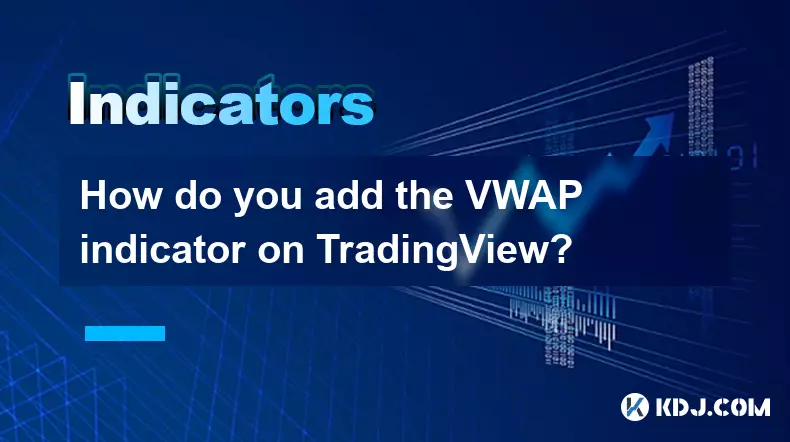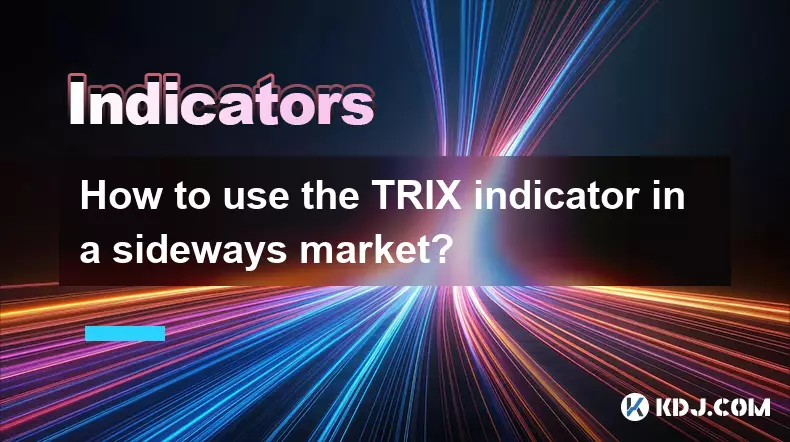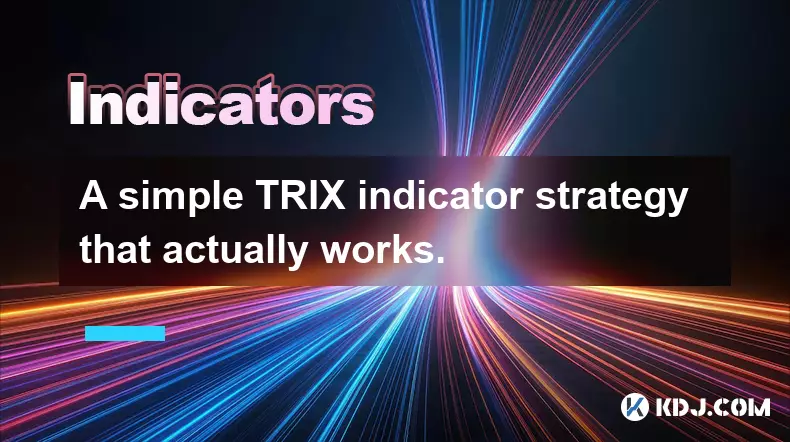-
 bitcoin
bitcoin $106680.127705 USD
0.67% -
 ethereum
ethereum $3615.722480 USD
-0.65% -
 tether
tether $0.999925 USD
-0.04% -
 xrp
xrp $2.550072 USD
5.91% -
 bnb
bnb $1002.572269 USD
-0.90% -
 solana
solana $168.746669 USD
1.08% -
 usd-coin
usd-coin $0.999832 USD
-0.03% -
 tron
tron $0.297244 USD
1.97% -
 dogecoin
dogecoin $0.182965 USD
0.71% -
 cardano
cardano $0.600432 USD
2.56% -
 hyperliquid
hyperliquid $41.439691 USD
-1.57% -
 chainlink
chainlink $16.548399 USD
2.40% -
 bitcoin-cash
bitcoin-cash $524.993680 USD
3.45% -
 stellar
stellar $0.302259 USD
4.10% -
 zcash
zcash $539.994871 USD
-16.31%
How do you add the VWAP indicator on TradingView?
Add the VWAP indicator on TradingView by clicking "Indicators," searching for "VWAP," and selecting "Volume Weighted Average Price" to analyze price trends with volume insight.
Oct 21, 2025 at 07:01 pm

How to Add the VWAP Indicator on TradingView
Adding the Volume Weighted Average Price (VWAP) indicator on TradingView is a straightforward process that enhances your technical analysis, especially for intraday trading. This tool calculates the average price of an asset based on both volume and price, offering traders insight into market trends and potential reversals.
Step-by-Step Guide to Locate the VWAP Indicator
- Open your TradingView chart by logging into your account and selecting the desired trading pair or asset.
- At the top of the chart interface, locate and click on the “Indicators” button, which appears as a symbol resembling “fx”.
- In the search bar within the Indicators window, type “VWAP” to filter available studies.
- Select “Volume Weighted Average Price” from the dropdown list. It is typically listed under built-in indicators.
- Once selected, the VWAP line will automatically appear on your chart, usually displayed as a single dynamic curve.
Customizing the VWAP Display Settings
- After adding the VWAP, click on the indicator’s name located in the upper left corner of the chart or right-click directly on the VWAP line.
- Choose “Settings” or “Format” from the context menu to access customization options.
- Adjust the color, line thickness, and style to differentiate it from other overlays. For instance, setting it to a bright green makes it highly visible.
- Explore additional settings such as anchoring the VWAP to specific timeframes like daily, weekly, or session-based periods.
- Confirm changes by clicking “OK” or “Apply,” and observe how the updated VWAP aligns with your strategy.
Using VWAP in Crypto Trading Strategies
- Traders often use VWAP as a benchmark for execution quality; buying below VWAP suggests favorable entry, while selling above indicates strength.
- In trending markets, price hugging the VWAP may signal continuation, whereas sharp deviations can foreshadow reversals.
- Combine VWAP with volume profile tools to identify high-volume nodes where price might react.
- Use multiple timeframes: applying VWAP on both 15-minute and hourly charts helps confirm alignment in momentum.
- Many professional crypto traders rely on VWAP as a core component of algorithmic execution strategies to minimize slippage and optimize entry timing.
Frequently Asked Questions
Q: Is VWAP available on all assets in TradingView?A: Yes, VWAP can be applied to any asset that has volume data, including cryptocurrencies, stocks, and forex pairs. However, its accuracy depends on reliable volume reporting, which is generally robust for major crypto exchanges integrated with TradingView.
Q: Can I add multiple VWAPs with different settings on the same chart?A: Absolutely. You can overlay several VWAP instances—each anchored to different sessions or timeframes—by re-adding the indicator and modifying its parameters separately. This allows comparative analysis across various trading sessions.
Q: Why does my VWAP reset during the trading day?A: By default, VWAP resets at the start of each new trading session, typically aligned with UTC or exchange-specific opening times. If you require a cumulative VWAP over multiple days, consider using a modified version like Anchored VWAP, which lets you set a custom starting point.
Q: Does VWAP work well in sideways or ranging markets?A: In range-bound conditions, VWAP tends to flatten and act as a magnet for price. Traders watch for price rejection at the VWAP line as a signal to enter counter-trend trades. However, it becomes less effective when volatility is low and volume is inconsistent.
Disclaimer:info@kdj.com
The information provided is not trading advice. kdj.com does not assume any responsibility for any investments made based on the information provided in this article. Cryptocurrencies are highly volatile and it is highly recommended that you invest with caution after thorough research!
If you believe that the content used on this website infringes your copyright, please contact us immediately (info@kdj.com) and we will delete it promptly.
- CFTC, Crypto, and Congress: Navigating the Murky Waters of Market Oversight
- 2025-11-11 10:55:01
- XRP: Is This Crypto's Best-Performing Asset?
- 2025-11-11 06:45:01
- Navigating the Crypto Maze: Economic Schedules, Treasury Auctions, and the Bitcoin Beacon
- 2025-11-11 07:40:01
- BitMine, ETH, and Assets: Navigating the Crypto Landscape Like a New Yorker
- 2025-11-11 13:00:02
- Exodus & Grateful: Stablecoin Payments Take Center Stage
- 2025-11-11 10:10:01
- AVAX & OP: Price Prediction, Open Interest, and Recovery Gains - What's Next?
- 2025-11-11 06:50:02
Related knowledge

What's the best way to learn the TRIX indicator?
Nov 10,2025 at 12:39pm
Understanding the Basics of the TRIX Indicator1. The TRIX (Triple Exponential Average) indicator is a momentum oscillator designed to filter out short...

How do professional traders use the TRIX indicator?
Nov 06,2025 at 04:40pm
Understanding the TRIX Indicator in Crypto TradingThe TRIX (Triple Exponential Average) indicator is a momentum oscillator used by professional trader...

Can I use the TRIX indicator on my mobile trading app?
Nov 07,2025 at 07:40pm
The TRIX indicator, a momentum oscillator designed to filter out short-term fluctuations and highlight long-term trends, has become increasingly popul...

How to use the TRIX indicator in a sideways market?
Nov 10,2025 at 03:00pm
Bitcoin’s Role in Decentralized Finance Evolution1. Bitcoin remains the cornerstone of decentralized finance, serving as both a store of value and a b...

How to code a simple TRIX indicator script in Pine Script?
Nov 07,2025 at 06:20am
How to Code a Simple TRIX Indicator in Pine Script The TRIX (Triple Exponential Moving Average) indicator is widely used in cryptocurrency trading to ...

A simple TRIX indicator strategy that actually works.
Nov 08,2025 at 05:39pm
Understanding the TRIX Indicator in Crypto Trading1. The TRIX (Triple Exponential Average) indicator is a momentum oscillator designed to filter out s...

What's the best way to learn the TRIX indicator?
Nov 10,2025 at 12:39pm
Understanding the Basics of the TRIX Indicator1. The TRIX (Triple Exponential Average) indicator is a momentum oscillator designed to filter out short...

How do professional traders use the TRIX indicator?
Nov 06,2025 at 04:40pm
Understanding the TRIX Indicator in Crypto TradingThe TRIX (Triple Exponential Average) indicator is a momentum oscillator used by professional trader...

Can I use the TRIX indicator on my mobile trading app?
Nov 07,2025 at 07:40pm
The TRIX indicator, a momentum oscillator designed to filter out short-term fluctuations and highlight long-term trends, has become increasingly popul...

How to use the TRIX indicator in a sideways market?
Nov 10,2025 at 03:00pm
Bitcoin’s Role in Decentralized Finance Evolution1. Bitcoin remains the cornerstone of decentralized finance, serving as both a store of value and a b...

How to code a simple TRIX indicator script in Pine Script?
Nov 07,2025 at 06:20am
How to Code a Simple TRIX Indicator in Pine Script The TRIX (Triple Exponential Moving Average) indicator is widely used in cryptocurrency trading to ...

A simple TRIX indicator strategy that actually works.
Nov 08,2025 at 05:39pm
Understanding the TRIX Indicator in Crypto Trading1. The TRIX (Triple Exponential Average) indicator is a momentum oscillator designed to filter out s...
See all articles










































































